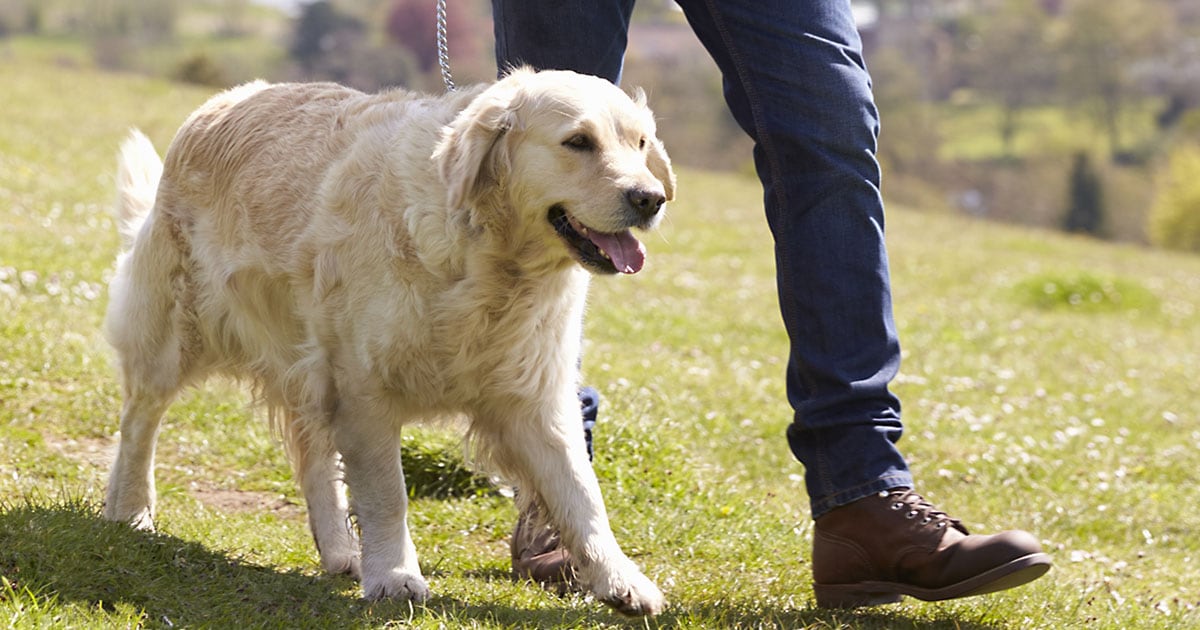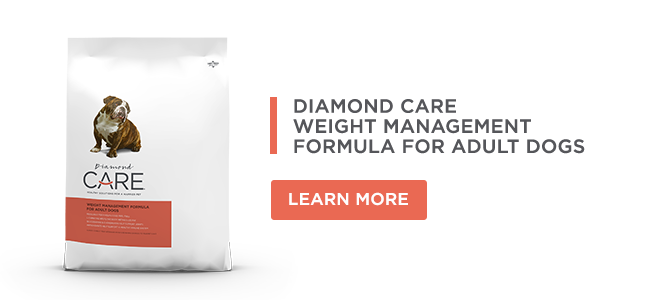The most direct approach to weight loss is no secret: fewer calories in and more calories out. It seems simple enough. If only it really was that easy for us and our pudgy pooches!
Ask anyone who has struggled with weight loss efforts: It takes commitment and a shift in mindset. But as challenging as it may seem, the reality is that losing weight and improving fitness can add more years to your dog’s life and more life to those extra years. And your dog isn’t the only one who benefits — you do, too. Studies show dog owners walk more and have higher levels of physical activity than people who don’t own dogs.
Exercise benefits your dog in many ways
Dogs that don’t get enough exercise are at risk for obesity when they become bored and relieve their boredom by eating. They also may be more likely to misbehave, acting out through destructive behaviors like chewing, digging and barking.
Providing your dog with regular exercise improves muscle tone and increases their metabolism, which can help with weight loss efforts. Exercise also supports healthy aging by helping to slow the muscle loss that occurs with aging, eases symptoms of some chronic health concerns such as arthritis, and helps to avoid regaining weight after loss. Finally, exercise provides mental stimulation, allows your pup to be social, gives them an opportunity to explore their environment and helps strengthen their bond to you.
Consult your veterinarian first
Before starting your dog on an exercise program, you’ll want to make sure they are healthy enough for more than a stroll around the neighborhood. Have your veterinarian perform a full physical exam, especially if one hasn’t been done within the past three to six months, to ensure your best friend has no underlying health concerns or limitations that could undermine weight management efforts. Your veterinarian can also tailor an exercise plan for your dog that considers their medical conditions or limitations (if any) and athleticism.
Feeding the right amount of a balanced, calorie-controlled food is just as important to safe, healthy weight loss as exercise. So in addition to increased activity, your veterinarian may recommend a weight management dog food, such as Diamond CARE Weight Management Formula for Adult Dogs.
Getting started
As with people, there’s no one-size-fits-all exercise plan for weight loss. The best type and amount of exercise for your dog will vary with their age, breed, current fitness level and general health. However, there is one exercise that both you and your dog can benefit from immediately and that most veterinarians will recommend as part of a weight management program: multiple walks outdoors every day. Walking is an ideal exercise because it puts less stress on joints than running, jogging or playing fetch.
Here are some approaches to increasing your canine companion’s activity that you can discuss with your veterinarian:
If your dog is overweight (but not obese) and has no joint, heart or respiratory issues, Ernie Ward, DVM, of Calabash, N.C., recommends starting with 30 minutes of brisk walking five days a week. Dr. Ward offers an excellent handout with tips on aerobic dog walking for weight loss that includes a sample schedule. Keep in mind that walking for weight loss is different from walking for pleasure, and few dogs will naturally walk at a speed that increases their heart rate to levels needed for aerobic activity and weight loss.
If walking five days a week seems a bit daunting, another approach to starting your portly pooch on an exercise program is to take a 30-minute walk three times a week for the first month. You and your dog can adjust to the increased activity, gradually increasing your pace and time as you both feel stronger. Your goal will be to work up to a 30-minute walk five to seven days a week.
RELATED POST: Overweight? Big Boned? How’s a Dog Owner to Know?
If your dog has been inactive for a long time or is obese, consider starting with 5-minute walks. By starting slowly, you’ll give your dog (and you) a chance to adapt to an exercise routine while building muscle strength and stamina. These short walks should be more than a stroll with frequent stops to check out different scents. It should feel like a brisk walk and you should break into a light sweat. From there, your goal will be to work up to a brisk 10- to 20-minute walk once or twice a day.
For overweight or obese dogs with limited mobility, you should talk with your veterinarian about options such as physical therapy or rehabilitation and low-impact exercise alternatives such as swimming or walking on an underwater treadmill.
A few other things to consider
Some additional tips for getting your dog to move more and track their progress are:
- Move the food bowl upstairs or downstairs, changing its location frequently so your dog has to walk to get to their food.
- Use play sessions and walks as rewards for good behavior instead of treats.
- Use toys, balls or squeaky toys to encourage games of fetch or chase. Try to play with your dog for at least 10 to 15 minutes twice daily.
- Track the minutes you spend walking each week, including briskly and casually. You can also note the amount of time spent playing with your dog.








